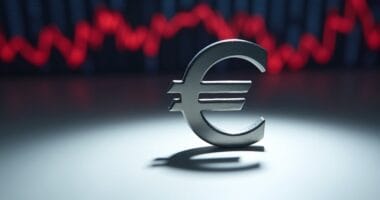Japan’s shift from near-zero to 0.5% interest rates is sending shockwaves through global markets. Japanese investors, sitting on mountains of overseas investments, might start bringing money home for better returns. This could trigger a massive financial reshuffling, affecting everything from U.S. Treasury yields to your retirement account. With inflation at 2.2% and more rate hikes predicted, 2025 looks like the year Japan finally wakes up. The real story’s just beginning to unfold.

Why are financial experts suddenly buzzing about Japan’s interest rates? After keeping rates near zero for what felt like forever, the Bank of Japan is finally flexing its monetary muscles. They’ve already pushed rates to 0.5% – the highest since 2008 – and they’re just getting started.
Let’s be real: Japan’s economy isn’t exactly setting the world on fire. Their GDP growth forecast for 2025 got slashed to a measly 0.5%, down from the original 1% projection. And 2026? Don’t get too excited – they’re looking at just 0.7%. Trade tensions with the U.S. aren’t helping, especially with President Trump’s tariff threats looming over global markets. Many mature companies in Japan have maintained steady dividend payments despite economic challenges.
But here’s where it gets interesting. Despite the economic headwinds, the BoJ isn’t backing down. Sure, they held rates steady in May 2025, but market watchers are convinced more hikes are coming. Inflation‘s running at 2.2% for fiscal year 2025 – lower than earlier predictions but still enough to keep central bankers up at night. Leading analysts like Goldman Sachs expect the next rate hike to come in January 2026.
The global ripple effects could be massive. Japanese investors, who’ve been dumping money overseas for years chasing better returns, might start bringing their cash home. That’s trillions of yen potentially shifting around the global financial system. Not exactly small change. Since 1972, Japan has maintained an average interest rate of 2.24%, suggesting there’s still room for significant rate increases.
What’s driving all this? Wages, for one thing. Japanese workers are finally seeing better paychecks, and that’s pushing up inflation. The central bank’s watching these “Shunto” wage negotiations like hawks, using them to justify their newfound hawkishness.
Here’s the kicker: most market players are underestimating just how aggressive the BoJ might get. While everyone’s playing it safe with their predictions, the central bank’s sending signals that they’re ready to push rates higher than anyone expects.
And in the interconnected world of global finance, what happens in Tokyo definitely doesn’t stay in Tokyo. Your portfolio might feel the effects before you know it.





